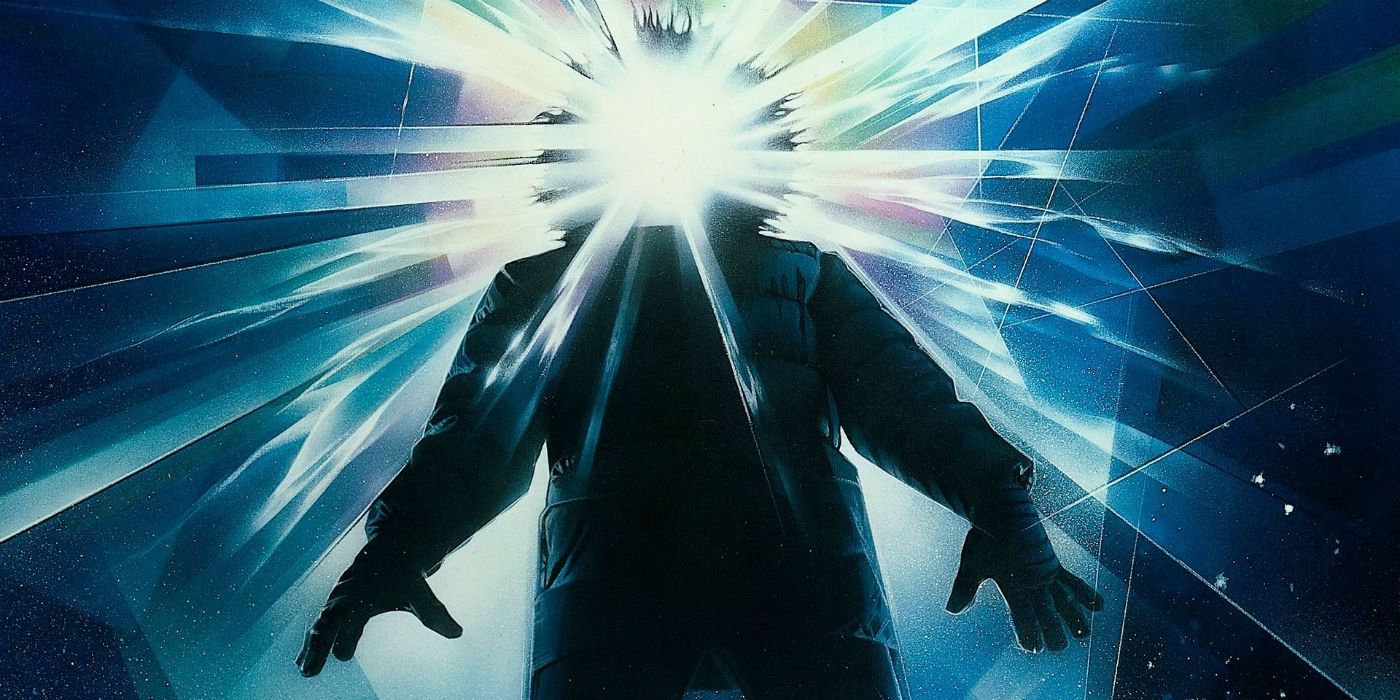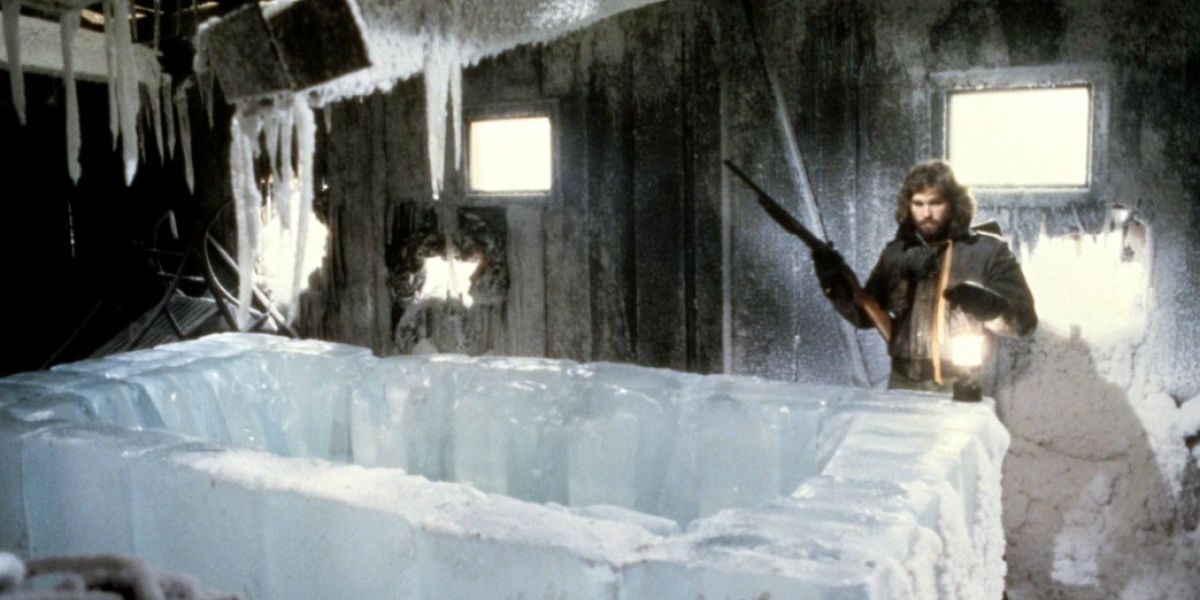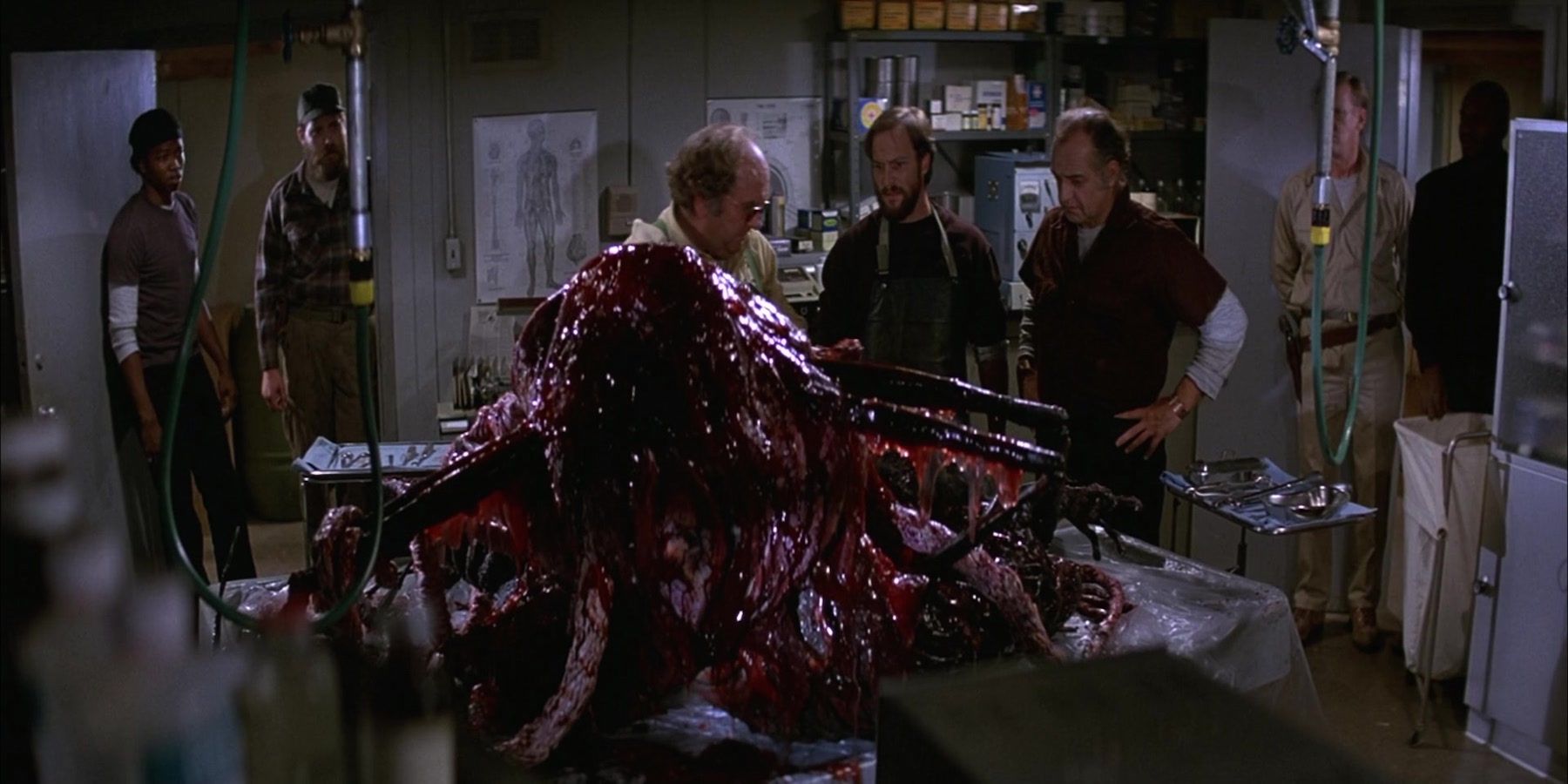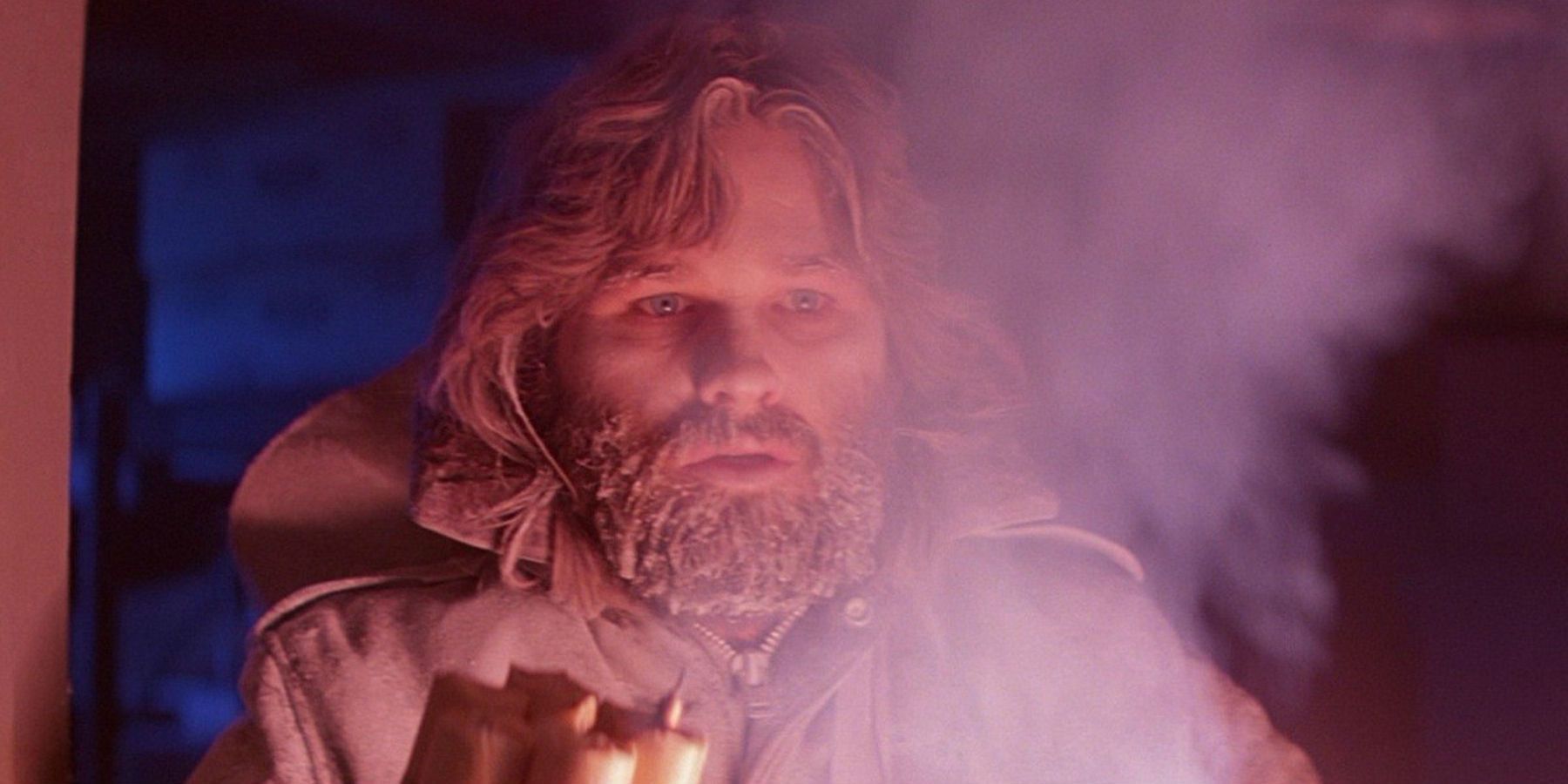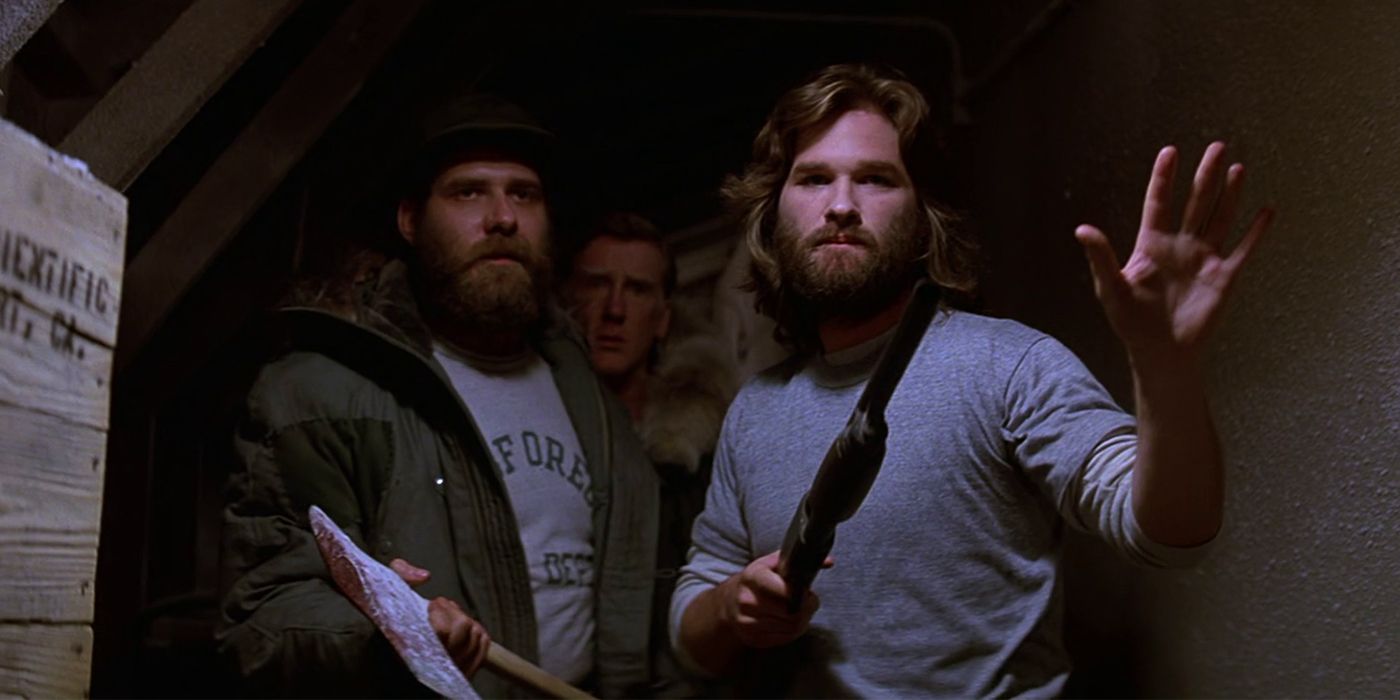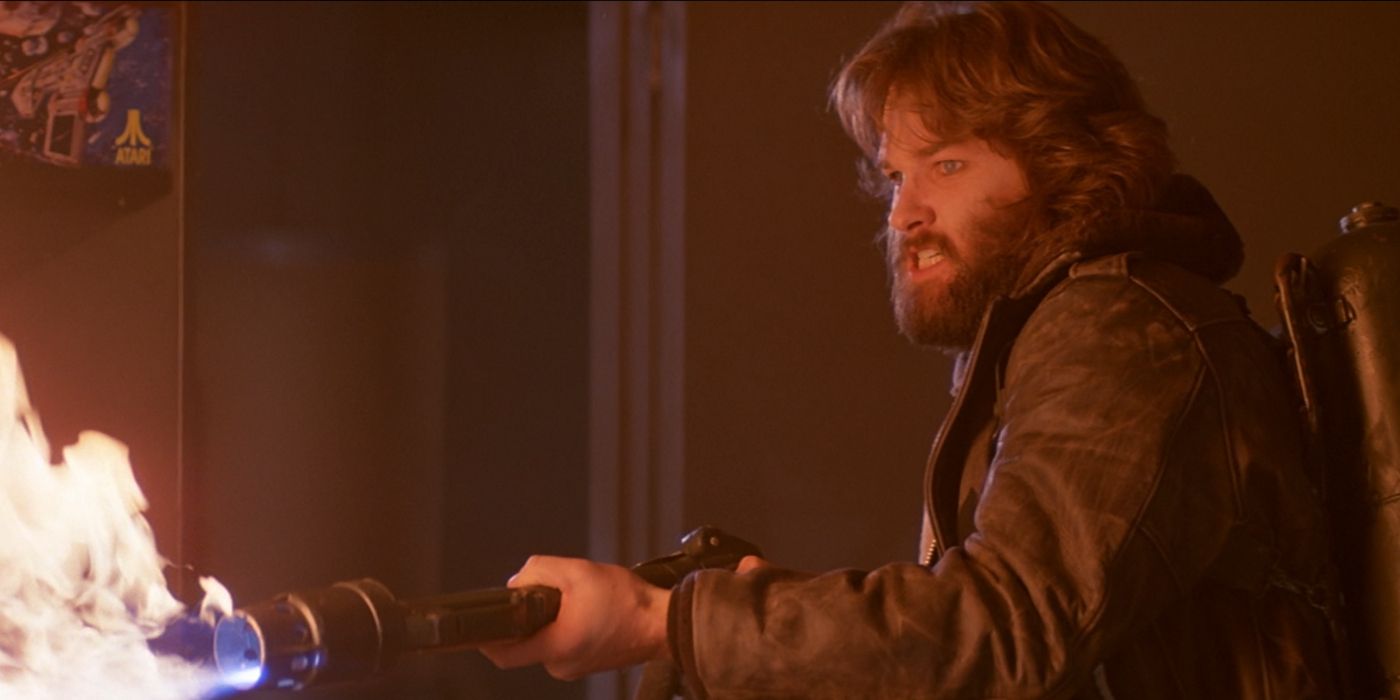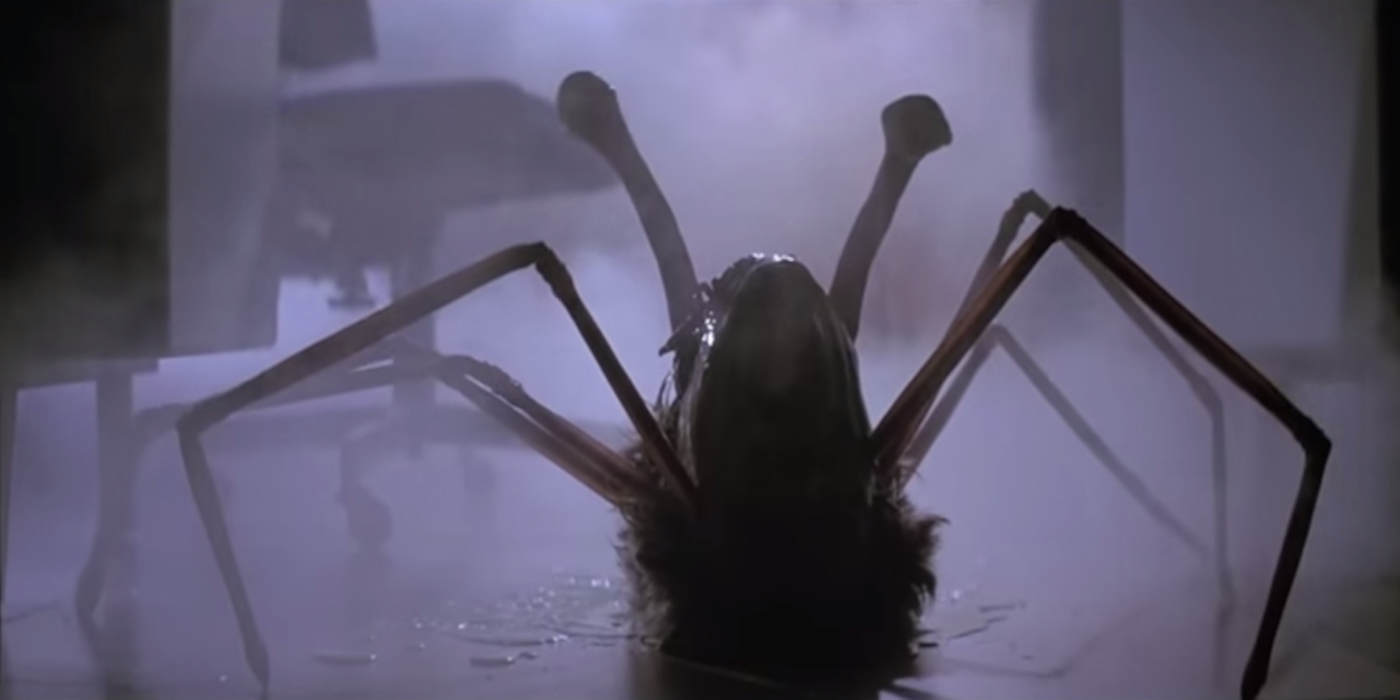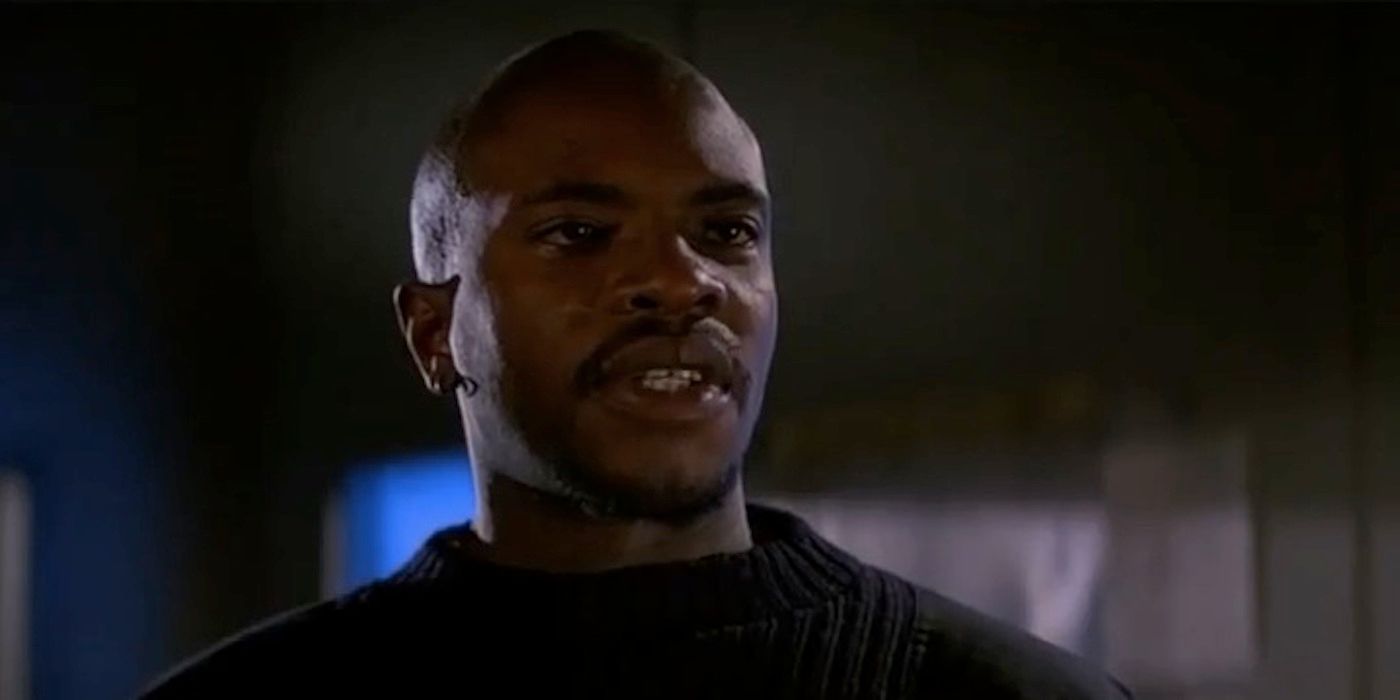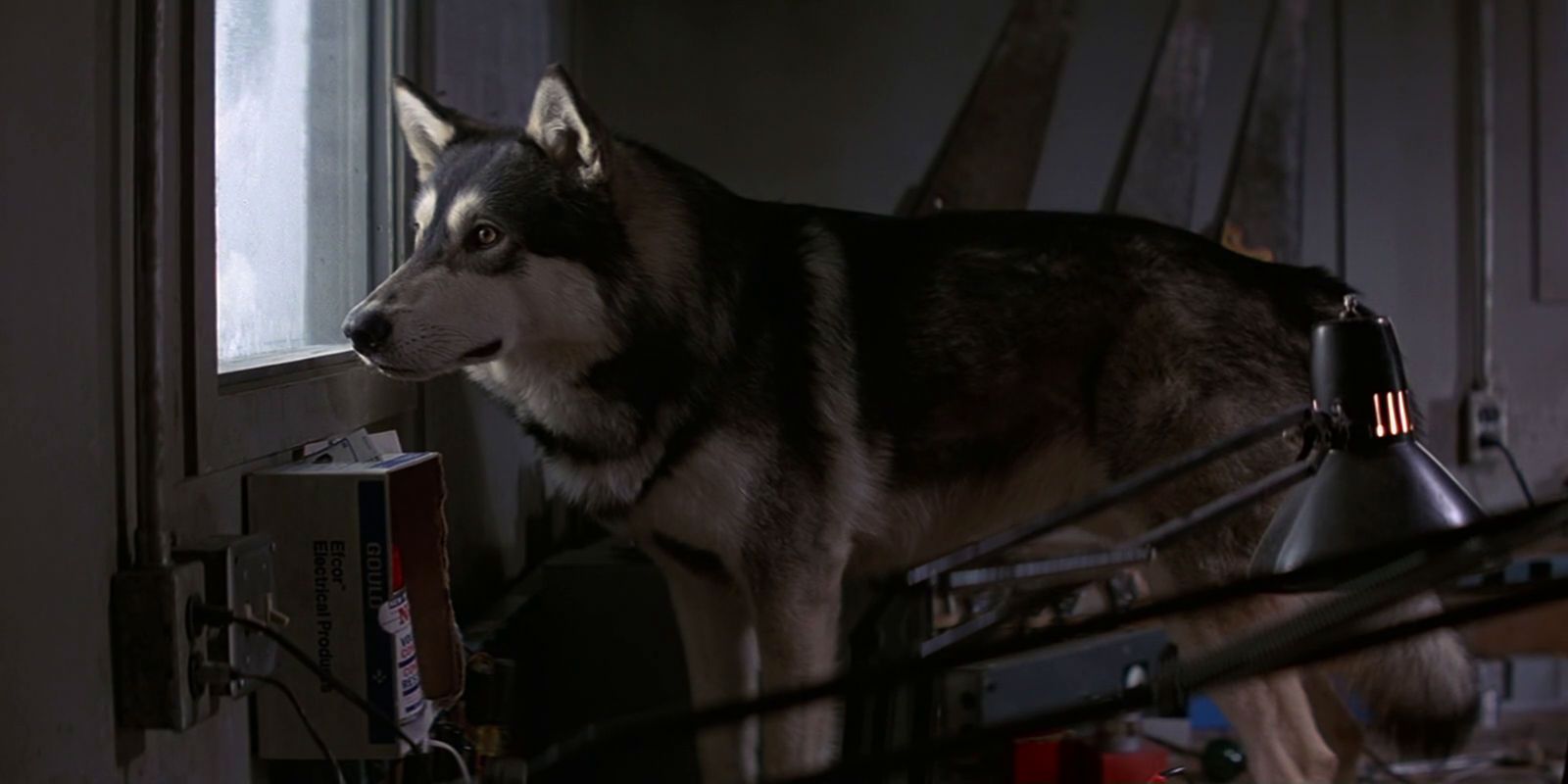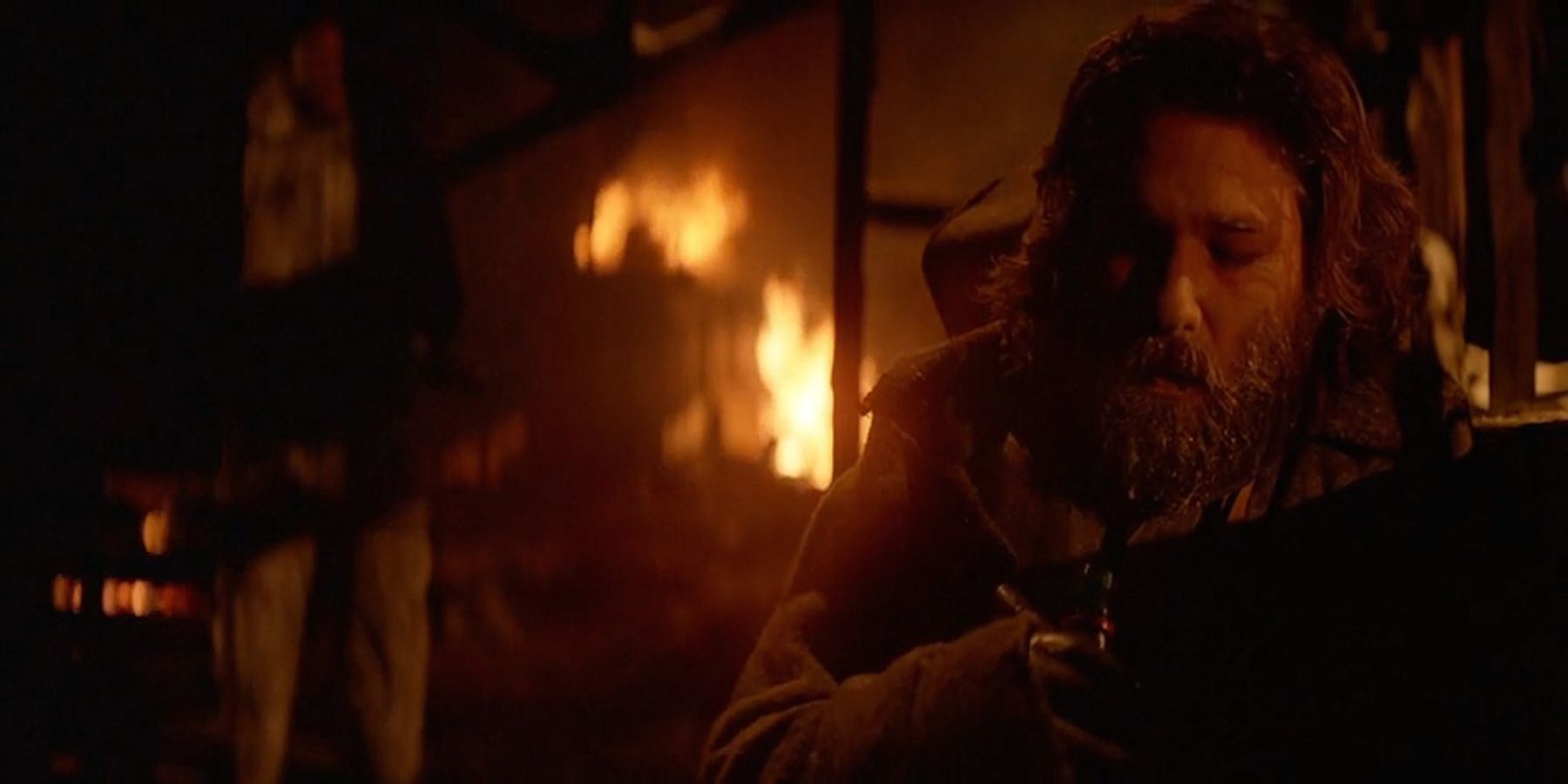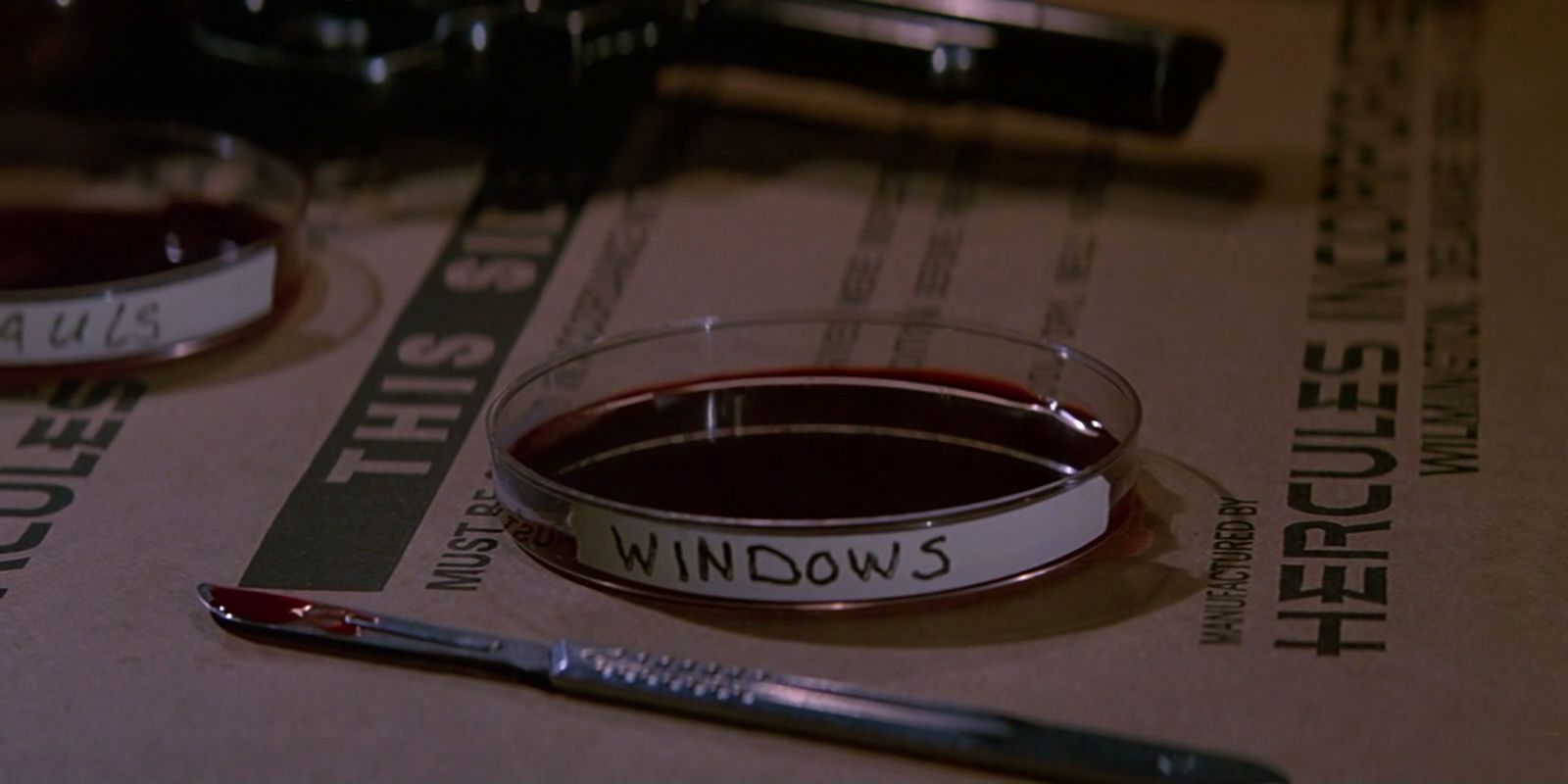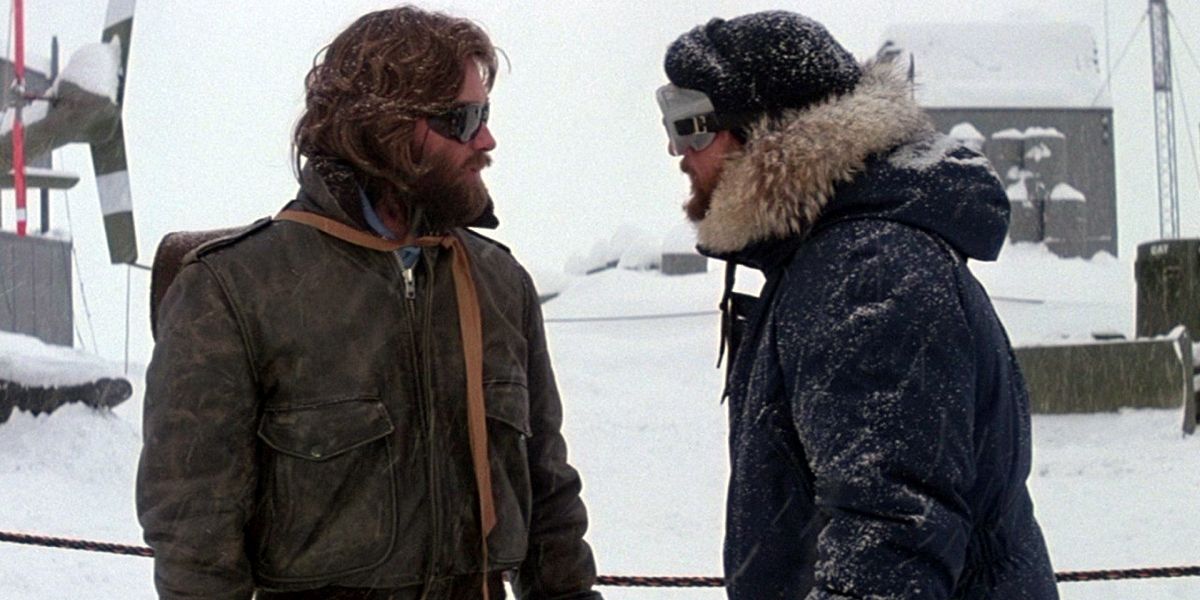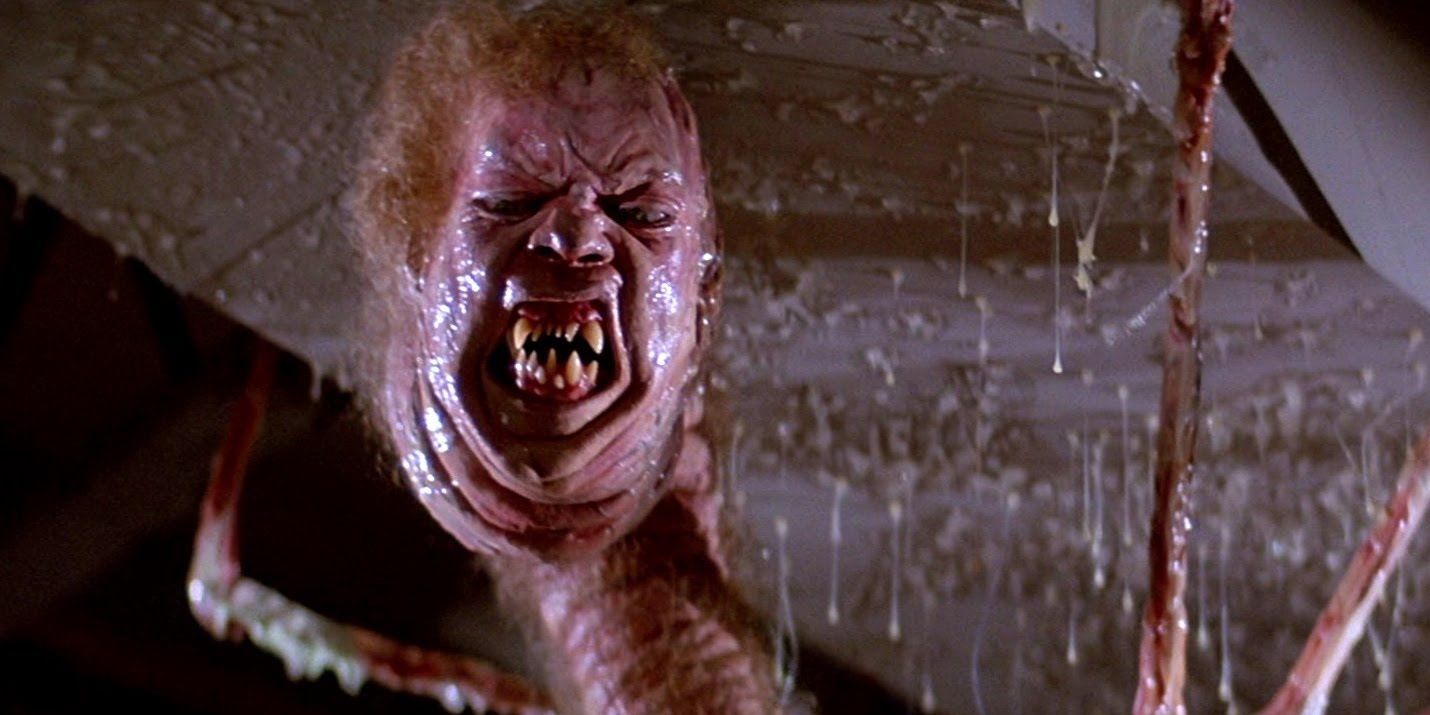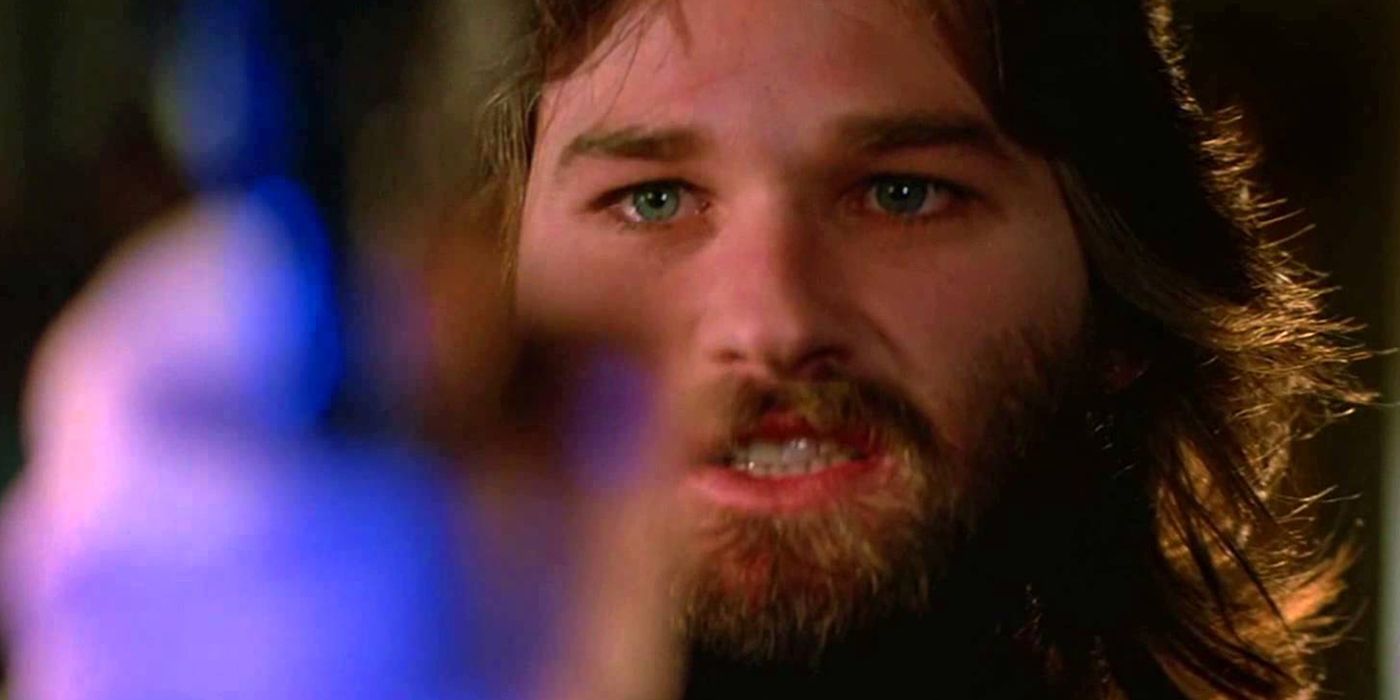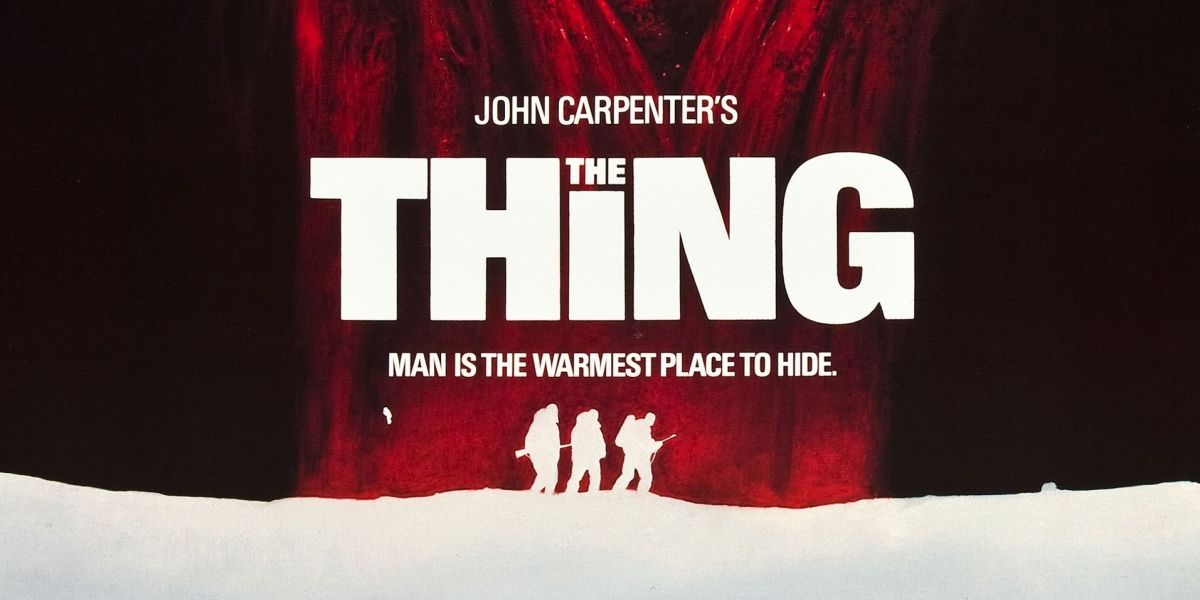Shout! Factory will release John Carpenter’s The Thing (Collector's Edition) on October 11, 2016. Even for a company that has produced a plethora of deluxe reissues from the filmmaker’s catalogue, The Thing is the crown jewel, and one of the most highly anticipated in the company’s history of excellent releases. It’s also the best remake ever made, a sci-fi/horror masterpiece offering a drastic and exciting reinvention of 1951’s B-movie classic The Thing From Another World.
We are under such a continual onslaught of uninspired remakes and reboots today that merely the word "remake" is (rightfully) bandied about with disgust. Most are churned out to make a buck and don't possess anything akin to artistic integrity (the ho-hum 2011 sequel/prequel to Carpenter's film is open for debate in this regard).
But every once in a while a filmmaker is able to do a new version that not only entertains, but also actually improves upon the original film, and John Carpenter’s 1982 cult classic is the most notable example. Let's look at 15 reasons why it succeeds where so many other remakes have failed.
SPOILER ALERT: Don't read if you haven't already seen the film! You've been warned.
15. More Faithful To The Source Material Than The Original Film
One of the biggest complaints of any filmic adaptation of a written work is that it's not faithful to the source material. While the Howard Hawks produced The Thing From Another World is a truly entertaining film, it only glosses over the details from Who Goes There, the acclaimed 1938 novella by John W. Campbell (under the pen name of Don Stuart). Like Who Goes There, it takes place in an Antarctic research station and involves an alien threat. But that’s where the similarities end.
Carpenter's remake (scripted by Bill Lancaster) wisely hones in on what made the novella so terrifying in the first place: the threat is an alien that can disguise itself as any human or animal, killing whoever it imitates in the process. This makes it an imminent threat capable of overthrowing humanity. That's a huge leap from the creature in the original Thing (played by James Arness), which is essentially a walking carrot.
By employing the original story’s narrative device, Carpenter implicitly sets up an atmosphere of paranoia and distrust within its central cast of characters, skillfully adding suspense and dread.
14. One of the Most Effective Cinematic Explorations of Paranoia
To elaborate on Carpenter’s use of elements from Who Goes There is to strike at the heart of the film: the psychological effects of paranoia, cabin fever, claustrophobia and isolation, and how they can destroy relationships with friends, co-workers, and even one’s own sense of self. This actually makes it the ideal companion piece with The Shining, (which, funnily enough, serves as an annual double feature for a real-life United States scientific research station at the Geographic South Pole),
By constantly shuffling the deck of personal motivations, characterizations and the need for a scapegoat, Carpenter references The Red Scare communist witch-hunt of the 1950s and 1960s even better than its predecessor, which actually came out during that period, while also pointing a finger at the "me generation" isolationism of Baby Boomers. A lack of trust during a crisis is a recipe for disaster, and Carpenter's vision of paranoid collapse still holds tremendous power.
13. Exceptional Use of Cast and Characters
The Thing features a stellar ensemble, with no gratuitous or extraneous characters. By working in an isolated environment with a small cast, each person plays a deliberate part in the story.
And by having a cast of such varied temperaments -- Kurt Russell's stoic and decisive helicopter pilot R.J. MacReady, fidgety communications officer Windows (Thomas Waites), hot-headed mechanic Childs (Keith David), gentle Blair (Wilford Brimley), crotchety station commander Garry (Donald Moffat), etc -- the film ticks all the boxes of classic character archetypes and motivations. Even Jed, the Husky that brings the alien contagion to our cast of heroes, is an unforgettable character in his own right. A finer canine actor cannot be found.
This comes in very handy when the film turns the screws on who’s who, allowing the actors to act subtly against their character's type, throwing their crewman (and audiences) for a loop in trying to decide if they’ve turned alien or are simply compromised by anxiety.
12. Underrated Upon Its Release, Now Seen As A Classic
Along with Blade Runner and Shawshank Redemption, The Thing is part of a long line of films that went from being poorly received upon its release to a reappraisal as a classic years later. You’ll find fewer examples of such an amazing turnaround in polarization.
Upon its release in 1982, The Thing had a one-two punch of savage reviews and poor box office. Just a snippet of quotes shows reviewers disdain towards Carpenter’s film: the New York Times' Vincent Camby called it "The quintessential moron movie of the eighties." And David Ansen of Newsweek declared “The Thing is so single-mindedly determined to keep you awake that it almost puts you to sleep.” Ouch.
The Thing also had the misfortune of competing against Stephen Spielberg’s family friendly E.T., which opened two weeks prior and had captured critics' and audiences' imaginations with a much cuddlier alien invader.
Thanks to VHS and cable, The Thing had a second wind, with many former critics eating their words and others singing its praises (it now is 80% fresh on Rotten Tomatoes). Not to mention all the filmmakers who were inspired by Carpenter’s dark vision; Quentin Tarantino’s The Hateful Eight wouldn’t even exist without its influence. Even though Hollywood still lives and dies by a film's opening weekend, The Thing proves that true art eventually finds the following it deserves.
11. For every E.T., we need a Thing
Speaking of E.T., there's an interesting and opposing parallel with Carpenter and Spielberg. Spielberg was the critical and commercial favorite for reasons that seem obvious now: his upbeat, more lighthearted stories were designed with wide audience appeal.
If anything, Carpenter was actually more in-tune with Generation X, the first demographic to absorb his filmography: cynics who are distrusting of authority and institutions. And along with They Live, The Thing was one of Carpenter's most notable lessons to never take anything at face value and to question reality. While these notions may not be as instantly appealing as Spielberg's, they hold lasting value and have symbolism that resonates afterward. In the end, they actually have a reciprocal yin and yang: the 1980s were a decade full of great and horrible things, and Carpenter helped us cope with the latter, be it fear of nuclear war, government corruption, or the dangers of materialism or fears of disease.
In other words, if alien life ever arrives on Earth, let's hope its E.T., but we had better be ready for The Thing.
10. Symbolism
A film about the dangers hiding in plain sight offers a lot of subtext for studious moviegoers to analyze and discuss. One thing that stands about The Thing is that it's one of the few horror films with an all-male cast. As a result, it deals with the power struggle inherent in a male hierarchy (with MacReady being the clear alpha male).
There's also a body horror element: a fear of disease, especially topical in the early 1980s with the rise of AIDS, a which at the time was cloaked in mystery, causing massive anxiety as well as vicious prejudice towards the gay community. This also plays into a male-dominated film, where victims are devoured in an intimate and horrific way, and the only way to decide who's "the Thing" is through a blood test.
These issues also feed into innate human instinct for survival and, in the end, this is a film where the collapse of fraternity amidst suspicion and paranoia gives way to survival of the fittest. MacReady and Childs survive because they value self-preservation above sentimentality or interpersonal relationships.
9. Keith David is a Badass
Keith David is a revered character actor, known for his extensive use in voiceovers, his role in cult TV show Community, and his memorable appearances in films like Requiem For A Dream, There’s Something About Mary, and Carpenter’s They Live to name but a few. But his role in The Thing is perhaps his best-remembered, even if he didn't nab a majority of the screen time and disappears for a good portion of the final act. David steals nearly every scene he's in. Seriously, who doesn't remember "do you believe any of this voodoo bullshit?!"
David's Childs' proves an excellent foil for Kurt Russell's MacReady, as they are both the most strong-willed and steely members of the crew, willing to help others, but confident that they can weather the threat better than anyone else. No wonder they struggle with attaining alpha-male status and are the only two left standing at the bitter end.
8. Intentionally Ambiguous
Most Hollywood tentpoles hammer viewers over the head with exposition so they don't get confused, but John Carpenter has never felt obligated to spell everything out in his films. And The Thing is quite bold in not telegraphing every plot point to the viewer.
This applies to both the ending, which we'll touch upon shortly, and to the ambiguity of which shadow-obscured human the dog infects at the start of the film. How does it even know to find another group of humans after escaping the Norwegian outpost? What exactly happened to Fuchs? And who stuffed MacReady's clothes in the furnace?
Even the exact process that the Thing uses to take over other organisms is ultimately left a mystery-- only glossed over in a brief explanation by Blair. The Thing is not a film that offers easy answers. But that’s also why it’s so damn good and has stood the test of time.
7. The Ending
For those wanting tidy, happy endings, John Carpenter is not the director for you. He’s spent his entire career making films that end unresolved. But even he realized his ending for The Thing was risky: “I remember the studio wanted some market research screenings and after one I got up and talked to the audience... and there was one young gal who asked, 'What happened in the very end?' and I said, ‘Well, you have to use your imagination.’ And she said, ‘Oh God, I hate that.’ We were dead in the water. Dead.” However, for diehard Carpenter fans, the finale to The Thing is his greatest triumph.
After MacReady blows up what he believes is the last remaining Thing, he sits in the aftermath of the explosion in the cold of the Antarctic. When Childs appears, having been thought dead, they question if either of them is no longer human. But they share a bottle of whisky, seemingly resigned to their fate... or in MacReady's words: "If we've got any surprises for each other, I don't think we're in much shape to do anything about it."
The best films are the ones that stay with you long after the credits roll. And by leaving The Thing so open-ended, its finale has inspired endless debates, fan theories, and what-ifs regarding what might have happened to the duo: was the lack of frosty breath from Child’s a hint that he was an alien? Or did the fact that he still had his earring prove he's human?
6. Ennio Morricone (and Carpenter’s) Musical Score
Carpenter’s films have always been notable for his self-composed musical scores. His use of ominous minimalist synth-scapes are a huge part of their appeal. For The Thing he was able to employ someone else to do the compositional duties: legendary Italian composer Ennio Morricone, famous for his work with Spaghetti Westerns like For A Few Dollars More and The Good, The Bad, and The Ugly.
Morricone's taut, stressful compositions add an extra layer of dread and grandeur to the proceedings. As much as John Carpenter wanted to turn over the musical reigns to Morricone for a full-orchestral score, he found himself missing his electronic musical template, which resulted in Humanity II, the haunting electronic heartbeat/pulse theme that drives most of the film and stamps it with an ominous power (along with his strategic use of musical stingers to emphasize jump scares). In the end, it's that Morricone/Carpenter symbiosis that makes The Thing one of the most notable and unforgettable soundtracks in genre filmmaking.
5. The Blood Test
By far the most memorable scene is the blood test, one of the most inventive cinematic examples of how to smoke out a bad guy. It uses a wonderfully simple solution to a particularly vexing problem: how do you determine who's human and who's not? In a base full of scientists, one would expect a deeply technical approach. Nope! It's actually our trusty helicopter pilot hero MacReady who figures out the perfect solution. "Ya see, when a man bleeds, it's just tissue, but blood from one of you Things won't obey when it's attacked. It'll try and survive... crawl away from a hot needle, say."
In a brilliant sequence, Carpenter dutifully clears each remaining survivor, one by one, in a deliberately repetitious series of cuts to lull the viewer into a false sense of security, until MacReady grabs one vial blood, which screams and leaps from him and gives away the alien's secret location. It’s easily Carpenter’s most terrifying sequence, and provides one of horror’s biggest jump scares in history upon the eventual payoff.
4. Rewards Repeat Viewings
One of the best things about John Carpenter films (let's not speak of Escape From L.A. or Ghosts From Mars ever again, shall we?) is that they are so re-watchable. They're basically cinematic comfort food, full of engaging characters, great one-liners, and widescreen atmosphere. But The Thing is Carpenter's film that truly rewards fans with repeated viewings; his most nuanced and layered film to date. Why? Because every time you watch it, you get a better sense of how the Thing acts-- knowing which characters will be changing into the alien gives a chance to watch how they subtly portray being "turned." This is most notable in the scene when both (Parmer) David Clennon and (Norris) Charles Hallohan have been taken over by the Thing and try to cast suspicion upon MacReady to deflect it from themselves.
It’s also worth rewatching for the film's gruesome prosthetic effects, which are beautiful in their ghastliness, and light-years ahead of other special effects laden films of the time (more on that next). And for the truly studious viewer, there's also the odd revelation that the elderly Dr. Copper (Richard Dysart) sports a nose ring! An old guy sporting a nose ring in 1982? That's kinda magical in its own right.
3. Rob Bottin's Mind-Melting Practical Effects Work
In this era of CGI bombast, practical effects have sadly taken a backseat in the visual effects department. However, in 1982, prosthetics were still the name of the game, and were elevated to a whole new level thanks to The Thing makeup artist Rob Bottin. He created some of the most amazing prosthetics in the history of cinema, which still look wonderfully textured and grisly today.
Much of the criticism leveled at the film upon its release was that it was too gory. Basically, Bottin did too good a job at grossing people out in inventive ways, whether it was stomach turning into a giant mouth and biting off a victim's arms, or a severed human head that sprouted legs and antenna like a cockroach. There's a certain inspired lunacy that is breathtaking in its grotesquerie. It's a crime against humanity that Bottin has become a reclusive presence thanks to CGI. The Thing still looks better than any modern horror movie you'll see today.
2. Kurt Russell
Kurt Russell rules as R.J. MacReady, a burly, fearless man of action and a damn good judge of character/alien behavior. When you first watch The Thing, it may seem odd that the one man who eventually takes control of a crew comprised of military men and scientists is a helicopter pilot. But that’s part of Carpenter’s and Russell’s brilliance in crafting one of the most beloved heroes in genre filmmaking.
Russell and Carpenter have created three indelible characters together over the years, in Escape From New York, The Thing, and Big Trouble In Little China. Where Snake Plissken is a badass anti-hero just out for himself, and Jack Burton is a buffoon who doesn't realize he's the sidekick, MacReady is the guy in it for the greater good, content to die of hypothermia if it means the Thing bit the dust. He'll just smile nice and easy while drinking whisky before he shuffles off this mortal coil. Oh, and he's also not above killing an innocent man if he stands in the way!
And how about that immortal leonine facial hair, huh? Perhaps when one truly dives into the phenomenon of 21st century beardos, we’ll all realize it all somehow pointed to a delayed appreciation for the hyper-manliness that is R.J. MacReady. You know we're right.
1. John Carpenter's Ultimate Masterpiece
Not only is the The Thing the best remake ever, it’s also Carpenter’s greatest cinematic achievement. Assault on Precinct 13, Halloween, The Fog, Escape From New York, Big Trouble In Little China, Prince Of Darkness, They Live, etc., are indisputable classics. However, The Thing saw Carpenter with one his biggest budgets, and he put every cent on the screen, with the cast, the effects, and the eerie, wonderfully fluid camerawork of cinematographer Dean Cundey. It all came together in a perfect crystallization of his skill and vision.
So it's actually quite devastating that the film’s poor box office, along with his follow-up flop Big Trouble In Little China (seriously: why were '80s audiences so clueless about Carpenter?), pushed him back into low-budget filmmaking, and an increasing cynicism towards Hollywood. But he was always ahead of his time, and The Thing is now an iconic work of film as a result.
---
So that wraps up our list on why The Thing is John Carpenter’s best film and best remake. Do you agree? Let us know in the comments.
The Thing [Collector's Edition] will be released on Blu-Ray October 11, 2016.

